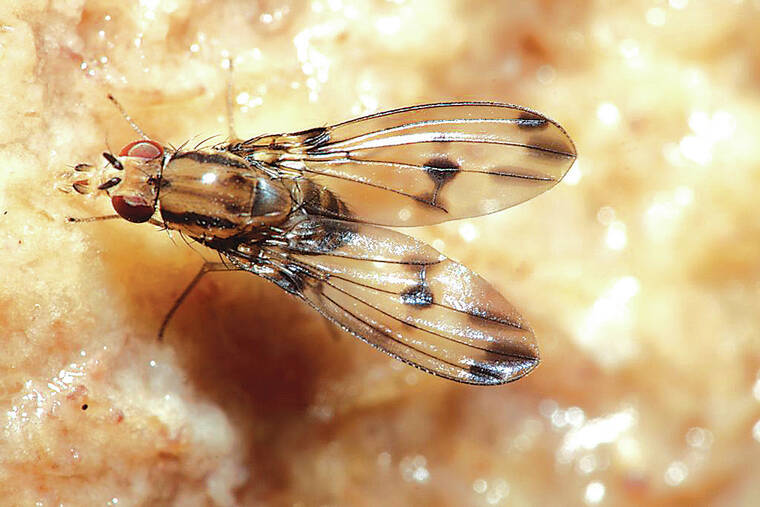Habitat set aside for 12 endangered Big Island species
The U.S. Fish and Wildlife Service has designated nearly 120,000 acres of land on Hawaii island as protected critical habitat for 12 endangered species.
These 12 species — including 11 plants and the Hawaiian picture-wing fly — are found only on Hawaii Island. The action, in response to litigation from the Center for Biological Diversity, means the lands have been identified and set aside for the conservation of one or more of the endangered species.
ADVERTISING
Maxx Phillips, the center’s Hawaii director, welcomed the news, which comes years after the nonprofit filed suit against the USFWS in U.S. District Court in 2019, saying the agency had failed to designate critical habitat for 14 endangered species in a timely manner.
Phillips said listing a species as endangered is the first step in ensuring its survival, but that critical habitat protections are the next step.
“There’s just no way to save these severely endangered species without protecting and restoring the places they call home,” said Phillips in a news release. “Protecting habitat is a crucial step but more needs to be done to address threats from fire, development and invasive species like rats and non-native grasses.”
The 12 species with designated habitat include the kookoolau, a perennial herb in the sunflower family; haha, a palm-like shrub found in South Kona; haiwale and kanawao keokeo, members of the African violet family; ‘aku; and Melicope remyi.
They also include the Phyllostegia floribunda; hoawa; Schiedea diffusa, subspecies macraei; Stenogyne cranwelliae, a vine found in the Kohala mountains; and maolioli, a flowering vine found in dry forest between the Mauna Loa and Maunakea mountains.
The Hawaii picture-wing fly, or Drosophila digressa, is the only species included in the list that is not a plant. It has historically been found in five locations at elevations of 2,000 to 4,500 feet in mesic and wet forest habitats.
The nearly 120,000 acres of designated habitat stretch across six ecosystems on Hawaii island — from the coast to dry and mesic forests and grasslands, rainforests and the slopes of Maunakea and Mauna Loa.
The USFWS decided not to designate habitat for two requested species — the loulu palm, or Pritchardia lanigera, and the opae pond shrimp, or Vetericaris chaceorum — saying that doing so would “not be prudent due to concerns related to potential collection from the wild.”
Additionally, the USFWS excluded the U.S. Department of Defense’s Pohakuloa Training Area from critical habitat designation, choosing instead to designate the adjacent Puu Anahulu Game Management Area managed by the state.
The Center for Biological Diversity was disappointed at this exclusion, saying that the Pohakuloa Training Area is where the maolioli plant is found, and that the dry forests it needs to survive are severely threatened by fires caused by the military’s training activities.
“Hawaii’s forest, grassland and coastal habitats are breaking down before our very eyes under the relentless onslaught of invasive species and destructive development,” Phillips said. “My heart is breaking at the loss of so many of our plants and animals that can be found nowhere else on the planet. We have to make restoring these critical habitat areas our highest priority.”





